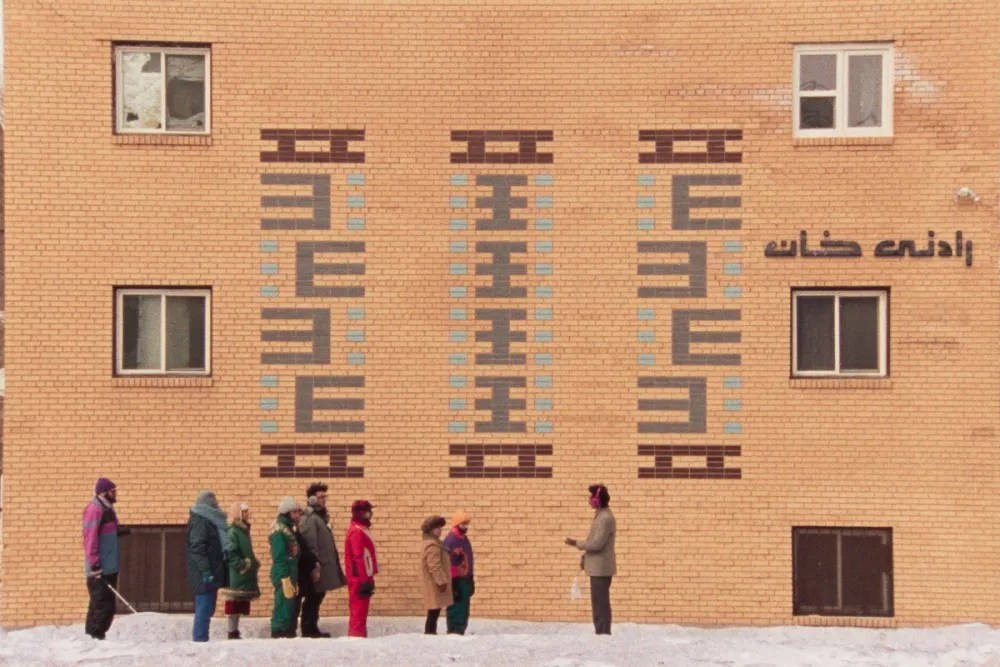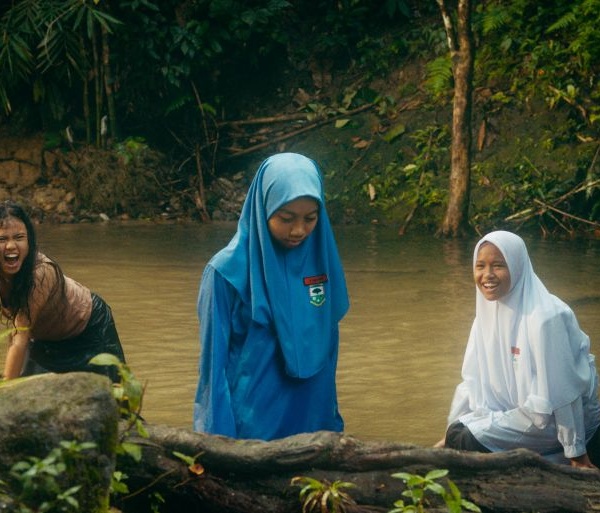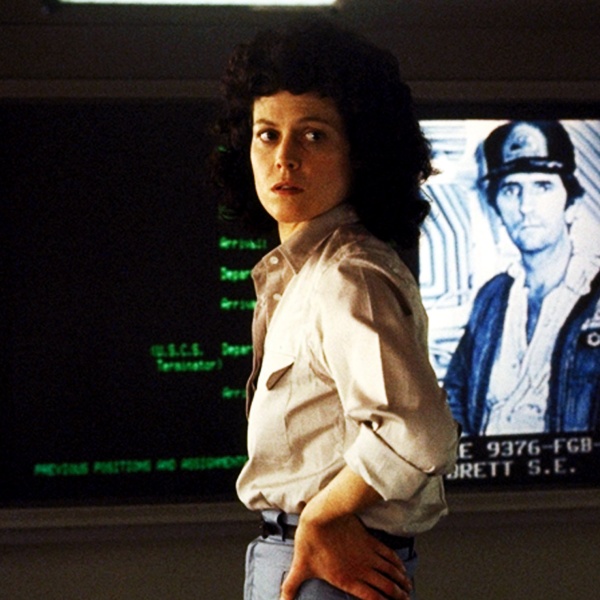
Despite being set in a parallel-universe Winnipeg where the people talk in Farsi and the world around them seems as if it’s been frozen in time since the mid-1980s (when Abbas Kiarostami, Mohsen Makhmalbaf, and the other masters of Iranian meta-realism were exploding onto the international stage), the haunted but hopeful “Universal Language” is an unmistakably modern film at heart.
Described by writer-director Matthew Rankin as a piece of “autobiographical hallucination,” this wonderfully deadpan whatsit is the work of a white 43-year-old Canadian man who fell in love with the movies a time when “foreign” cinema was becoming more available to people outside major cultural hubs. He found that Kanoon-style fables like “Where Is the Friend’s House?” and “The White Balloon” spoke to him in a way that few English-language films ever had. That discovery sparked a cross-cultural dialogue that eventually compelled Rankin to visit Tehran in an effort to locate the auteurs who had inspired him and learn why their films had whispered in his ear. Rankin’s search didn’t come up empty so much as it led him all the way back home to Winnipeg, where — in close collaboration with co-writers Pirouz Nemati and Ila Firouzabadi — he was newly able to appreciate that boundarylessness itself can be one of cinema’s greatest virtues.
The Kaurismäki-dry comedy that resulted from that realization is a hyper-specific creation steeped in local Canadian lore, one based on an incident that happened to the director’s late grandmother, and altogether so personal to Rankin’s lived experience that he stars in it as a version of himself. “Universal Language” is first and foremost a testament to the shared artifice of all filmic storytelling, and to the singular realities it’s able to bring alive in turn.
Rankin has said the movie is about “how ‘there’ is also ‘here,’ and how everybody around you is also you,” and while a less sincere take on the same conceit might have exploited it in the service of such nice ideas, this one — which openly draws not just from the Iranian masters, but also from Wes Anderson, Roy Andersson, Elia Suleiman, and more — maintains the courage of its convictions until it achieves a mysteriously sad kind of soul transference in its final moments. So far as “Universal Language” is concerned, there is nothing more beautiful than being able to recognize ourselves in each other, and nothing more tragic than denying ourselves that chance. Don’t be fooled by all of the analog throwback charm: This is a bittersweet lament for an interconnected age where people have every opportunity to appreciate what they have in common, but lack the vision needed in order to see it clearly.
As anyone who saw Rankin’s deliriously silly biopic “The Twentieth Century” should already know to expect, “Universal Language” isn’t quite as serious as it sounds. It almost never passes up the chance to undercut its Kiarostami cosplay with a cold shiv of wry absurdism and/or some loving jokes at Winnipeg’s expense. That dynamic is on full display from the very first scene, a terrific bit of business that introduces a class full of adorable Iranian-Canadian kids at the Robert H. Smith school — its signage all in Farsi, of course — and their miserable teacher who insists that when he sees their faces he sees little hope for humanity. It doesn’t help that Omid (Sobhan Javadi) shows up late claiming that a turkey gobbled up his glasses and ran away with them. And not just any turkey, but a prize-winning bird that has won two avian beauty contests and will play a critical role in the interweaving plot threads that “Universal Language” eventually braids into a unified story.
Those plot threads are subtly — if fittingly — achronological, if only so that Rankin and his co-writers can revel in the moments when things tie together, and also avoid the dull linearity of cause and effect until the time is right. The biggest incident that drives the action is when two of the schoolgirls discover 500 Riels frozen in a puddle of ice; they hope to buy Omid a new pair of glasse with the money, but they can’t figure out a way to thaw it free, and they don’t trust the local tour guide (Pirouz Nemati as Massoud) who offers to keep watch over the cash while they go off for help.
And maybe they shouldn’t, but their search allows Rankin to give us a tour of his own, his camera wending through a maze of concrete that includes fun locations like the city’s “Beige District” (totally different from the gray part of town), the Kleenex Repository, and later the abandoned mall of Portage Place, where the clock has no hands but tourists are only allowed to stay for 30 seconds at a time. “Winnipeg used to be a very romantic place,” a character sighs at one point. “Anyway, I’ll take you to the Tim Horton’s now.”
Tragicomic as these sights are supposed to be (Massoud’s tour includes a stop at the Great Parallel Parking Incident of 1958), Rankin’s dense and/or arrestingly composed frames afford them layers of new life. Cinematographer Isabelle Stachtchenko brings a blustery crispness to the blue-gray Winnipeg air, the production design is detailed and clever, and the film’s off-kilter energy seems to spill off-camera in every direction. Even that Tim Horton’s is a beautiful place in its own right, the combination of NHL kitsch and traditional Iranian tea paraphernalia offering a delightful microcosm of the film’s twilight zone liminality. It’s no wonder the whole thing takes place on February 29.
Rankin’s affection for Winnipeg is appropriately cemented by the character he plays, a civil servant named Matthew who quits his miserable government job in Quebec and returns to his hometown to visit his ailing mother for her birthday. The city has changed so much since Matthew was last there (his mom doesn’t even live in the house where he left her), but he manages to hear a faint song of warmth and kindness amid the whistling winds of winter. I’m not just talking about the classic Canadian soft rock jam that gets reworked into the style of a traditional Iranian folk song in a gag that encapsulates this film’s strange comic poignancy.
The extent to which Matthew overtakes the story can be jarring, as that process is diffused across several amusing but increasingly morose asides. The character maintains a blank stare at virtually all times, but the filmmaker playing him is clearly happy to act as a tour guide himself and show us all the little places he cares about, real or invented. The frustratingly imprecise sorrow that begins to overtake Matthew is offset by the generosity of spirit he finds along the way, with those opposing forces eventually wrapping around each other in a mystical climactic scene that reflects the movie’s emphasis on cross-cultural exchange on a deeper level than realism would ever allow. It’s a moment that “Universal Language” has been preparing us for since well before Matthew’s first scene, but it still feels abrupt in a way that undermines its power. Matthew has been too simple an avatar for his transformation to feel like the sea change that it should.
Be that as it may, what Rankin is trying to achieve here is so beguiling and consistent throughout the movie that its various asides gather their own emotional weight. My favorite of them all: The forgotten briefcase that’s been left unopened on a bench since 1978, and since enshrined as a UNESCO World Heritage Site for being “a monument to absolute inter-human solidarity, even at its most banal,” as no one has ever looked inside and spoiled its contents. To watch “Universal Language” is to feel as if you’ve been privileged to a brief and memorable peek.
Grade: B+
“Universal Language” premiered at the 2024 Cannes Film Festival. Oscilloscope has U.S. distribution rights.





